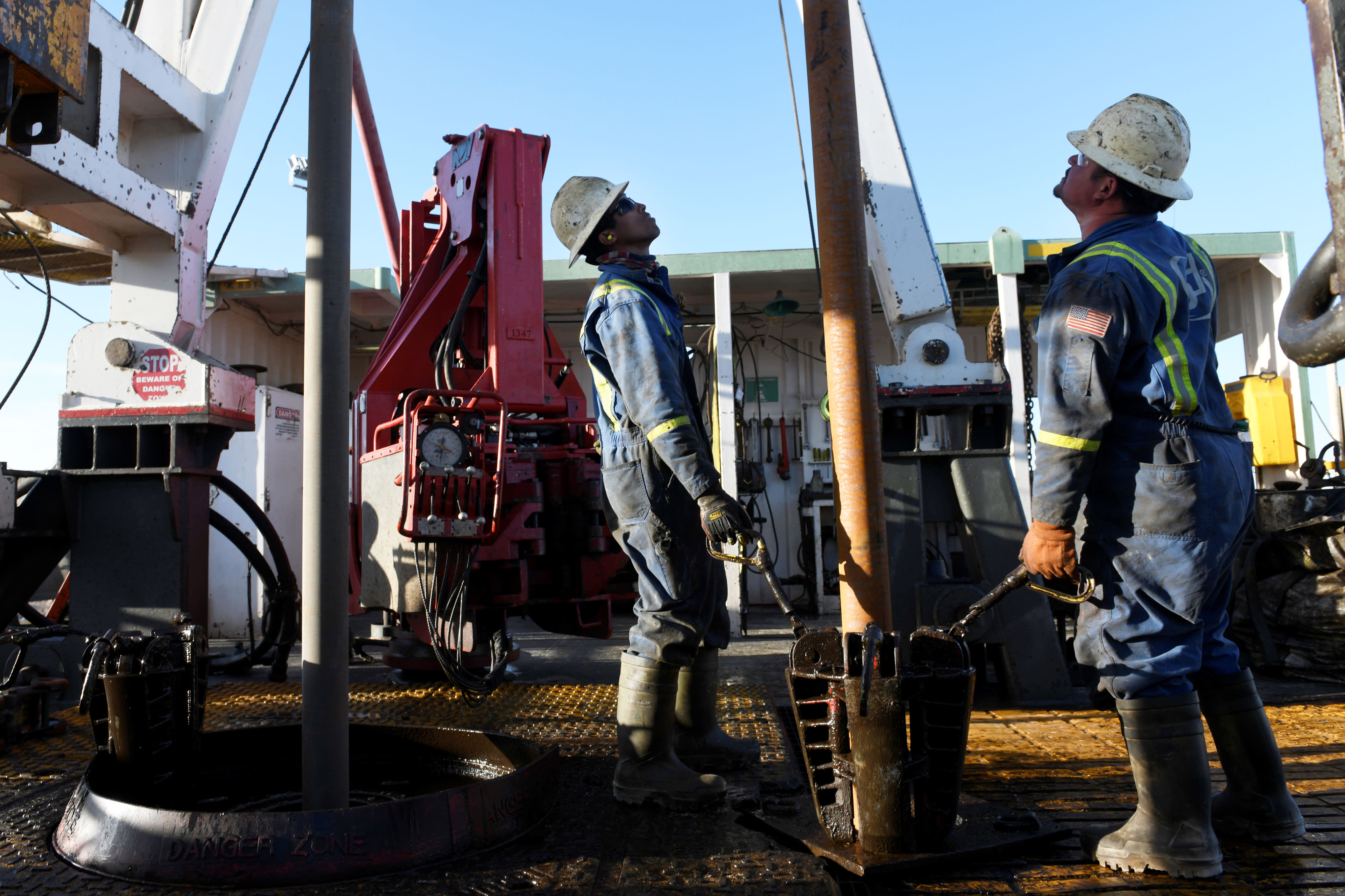This post was originally published on this site

Oil prices continued their steep decline on Thursday, with U.S. West Texas Intermediate crude falling more than 5% at the low to $46.18 per barrel — a price not seen since Jan. 2019 — as fears of the coronavirus outbreak, and what it could mean for crude demand, continue to batter prices.
“Current forecasts of crude oil demand have fallen off a cliff. As China is the largest consumer in the world, the unclear impact of the coronavirus is driving WTI lower and lower,” KKM Financial founder and CEO Jeff Kilburg said to CNBC. “As China is the largest consumer in the world, the unclear impact of the Corona virus is driving WTI lower and lower,” he added.
U.S. West Texas Intermediate fell 4.8% to trade at $46.37 per barrel, bringing the week’s decline to more than 12%, and the year-to-date loss to more than 23%. WTI is pacing for its fifth straight session of losses, and has tumbled even deeper into bear market territory, sitting 29% below its 52-week intraday high level of $66.60, reached last April.
International benchmark Brent crude fell 4.1%, or $2.19, to trade at $51.21 per barrel.
A drilling crew secures a stand of drill pipe into the mouse hole on a drilling rig near Midland, Texas February 12, 2019.
Nick Oxford | Reuters
“The demand outlook for the crude oil and refined products keeps taking hit after hit,” Again Capital’s John Kilduff said. “The entirety of the key Asian oil consumption region is reeling from the coronavirus outbreak, and oil prices are suffering the most of all asset classes,” he said.
While lower oil prices can be good for consumers at the pump, it can be a warning sign for the global economy, since softer demand can mean a slowdown in economic growth.
As oil continues to slide, all eyes are now on next week’s OPEC+ meeting, where the cartel and its allies will convene in Vienna from March 5-6.
“OPEC will likely balance the market through reduced oil supply once the impact on demand becomes more certain,” Rob Thummel, portfolio manager at energy-focused Tortoise Capital Advisors said. “In addition, manufacturing activity, industrial activity, transportation – all drivers of oil demand will return once the coronavirus runs its course,” he added.
But not everyone is convinced that OPEC+ will be able to provide a floor for prices, with Kilduff arguing that the organization is “almost powerless, at this point, to address or react to the cratering of demand.”
On Wednesday the XLE, an ETF that tracks the energy sector, fell to an almost 10-year low with all but two components in the index trading in bear market territory.
RBC noted the big impact that continuously depressed oil prices will have on energy giants.
“For the Global Integrateds, facing a downturn across all business segments, and we see headwinds to consensus earnings estimates for some companies, to the tune of 20-25% based on current forward curve commodity prices,” the firm said. “Elsewhere, in E&P [exploration and production] and OFS [oilfield services], many companies have hedging in place for H1/20, or already low expectations. If commodity prices remain weak though, risks of course mount,” the firm said.
On Wednesday WTI entered a death cross — when the 50-day moving average falls below the 200-day moving average — which is a typically bearish technical indicator.
According to Bespoke Investment Group, it’s the first time WTI has entered a death cross since July, and just the seventh instance over the last 30 years.
“Crude oil death crosses have typically seen further declines over the next month, but six months out has actually seen big gains with positive returns five out of six times,” Bespoke said in a note to clients.
The firm said that now that WTI is trading below $50, the next support level to watch is around the $42.50 mark, which oil last traded at in Dec. 2018.
– CNBC’s Michael Bloom contributed reporting.
Subscribe to CNBC PRO for exclusive insights and analysis, and live business day programming from around the world.





